Research Report: 2022
▼ Choose a report:

Powered by Research & Graduate Studies

Powered by Arts and Social Science
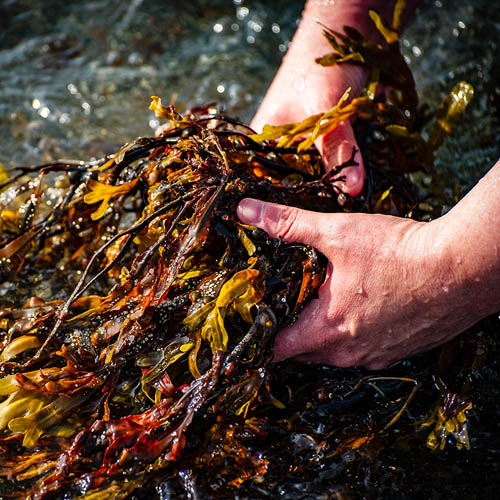
Powered by Science and the Environment

Jump To:

Caption: Joan Cranston of Bonne Bay Consulting, outside the Bonne Bay Cottage Hospital, where many of the GNP-RC activities in Norris Point take place.
Great Northern Peninsula Research Collective (GNP-RC) was established in 2019 as an interdisciplinary, community-academic partnership centered on the Great Northern Peninsula (GNP) of Newfoundland, Canada along the Gros Morne to St. Anthony corridor. Its purpose is to support community quality of life using a strengths-based approach.
"We envision researchers and community partners working together to create vibrant, resilient, rural communities on the GNP through knowledge mobilization and knowledge creation facilitated by research," said Nurse Educator Dawn Pittman, faculty member at Western Regional School of Nursing and research collective member.
The activities and research projects of the GNP-RC have worked to support healthy aging in a province with the highest median age in Canada and in a region, the GNP, that has more older adults than other areas in the province.
A timeline of GNP-RC activities and research projects:
The idea for the formation of the GNP-RC began during a community-engaged research project about older adult nutrition (Pittman & Parsons, 2023). This led to conversations about understanding community issues and knowledge needs and how researchers require information and an avenue for communication. Collaborations with other interested academics and community members, or what we refer to as community brokers - embedded leaders within the community who can provide education, program support, and can act as a link between their community and external organizations, led to the creation of the GNP-RC.
The work of the GNP-RC has focused on three hubs geographically placed throughout the GNP in Norris Point, Port au Choix, and St. Anthony. These hubs can act as rural health and research spaces where programming and services can be offered close to home. The hubs are operated as social enterprises with a board of directors. At the Old Cottage Hospital in Norris Point, the first established hub, the GNP-RC have worked on grant applications, have wrote articles to share information about a meals-on-wheels program offered during the Covid-19 pandemic to older adults (Tchoukaleyska & Pittman, 2021), and have undertaken research about the establishment of an onsite daycare (Tchoukaleyska, 2021).
A lack of healthy eating options and limited access locally to health care professionals (HCPs) offering services such as physio, massage, chiro, acupuncture, etc. led to the establishment of the GNP Community Place in a local heritage building. This hub has a community kitchen, treatment rooms for visiting HCPs, and plans for further services. To support the development of this social enterprise research was completed by the GNP-RC that included a comprehensive literature review on models of health care delivery and other considerations (Pittman et al., 2021), as well as research that explored philanthropic giving and options for the purchase and ongoing operations of the space (Tchoukaleyska et al., 2021).
The GNP-RC has focused on a number of agricultural initiatives to increase local food production and access, and to improve the nutrition of older adults living in the area. The Old Cottage Hospital has offered healthy meals for purchase from their community kitchen and has been able to host events where healthy food is made on-site. The hub has also worked with Gros Morne Farm & Market to offer space for an indoor grow room and an outdoor greenhouse. There has also been work on funding applications for the development of an earth-sheltered greenhouse (Cranston et al., 2023). The GNPRC has community members involved in food production and representatives from food oriented organizations.
A visioning and team building session for the GNP-RC was held in spring 2023 to develop objectives and a plan for upcoming projects. The community-driven "Starting with Ourselves" project (Cranston et al., 2022) involved community members tracking some of their own health information, such as blood pressure, pulse and blood sugar. This led to a local community broker working on the development of software for a personal health information tracking app with Memorial University of NL and IBM.
"People need to know if the changes they are making in their life will help them age well," said Joan Cranston of Bonne Bay Consulting. "They need to be able to track these changes to see if they are helping or hurting." Feedback from the GNP-RC has led to revisions of the app, such as the inclusion of more indicators and the ability to add flags to represent the start of new interventions or other milestones.
How personal health information tracking can support healthy aging:
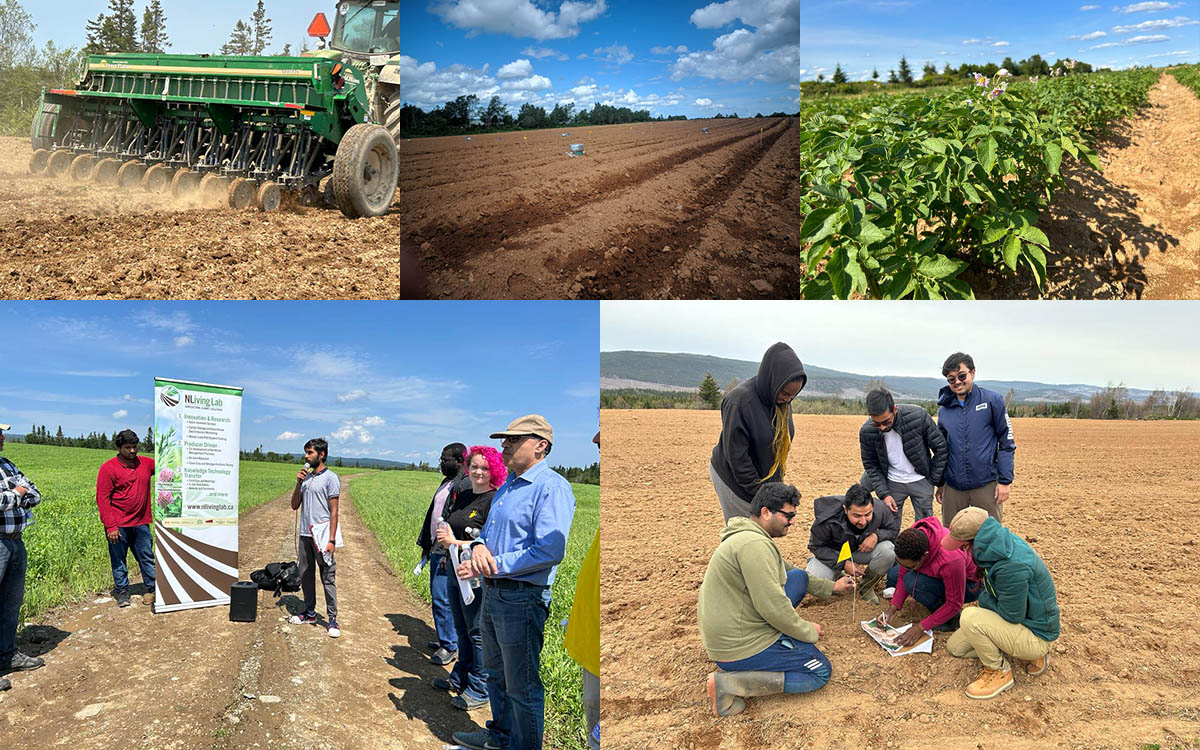
Living Labs in action
The Agricultural Climate Solutions Living Lab for Newfoundland and Labrador (LL-NL) is a collaborative research project that brings together producers, scientists, and other stakeholders to co-develop beneficial management practices (BMPs) for mitigating GHG emissions and C sequestration. It is a partnership of the Newfoundland and Labrador Federation of Agriculture; Grenfell Campus, Memorial University; Agriculture and Agri-food Canada; and the NL Department of Fisheries, Forestry, and Agriculture. All stakeholders work together to conduct on-farm research that puts farmers at the forefront, involving them at every stage (design, implementation, and evaluation).
The LL-NL project's core principles are:
Beneficial management practices proposed for the living lab were identified following the living innovation approach, which emphasizes co-development and focusing on farmers' needs. Producers and researchers identified management practices that would be the basis for the scientific studies for the living lab, including:
"The living lab also offers an opportunity to evaluate selected BMPs along with socio-economic considerations." said Dr. Mumtaz Cheema, principal investigator.
He said a successful living lab depends on a transdisciplinary approach: co-designing and co-developing BMPs with producers/farmers/participants, as well as monitoring, evaluation, and/or research on working landscapes. These components are fundamental to this process and integrated into the vision of this proposal.
A key aspect of the project is to identify cereal legume cover crop mixtures that have the potential to improve productivity and nitrogen use efficiency in annual forage and potato production systems. Assessments of soil health and economic viability will inform producers' decisions to test, or ultimately adopt, these BMPs.
The LL-NL project has the following objectives:
"The partners place farmers at the centre," said Dr. Cheema, adding that the project is organized so knowledge produced on farms will be transferred to the neighbour farmers, enabling further development of solutions that are adapted to their region. "The expectation is that multiple sites throughout the province will ensure participation and knowledge sharing between project members, accelerating the adoption of more sustainable and environmentally friendly practices."
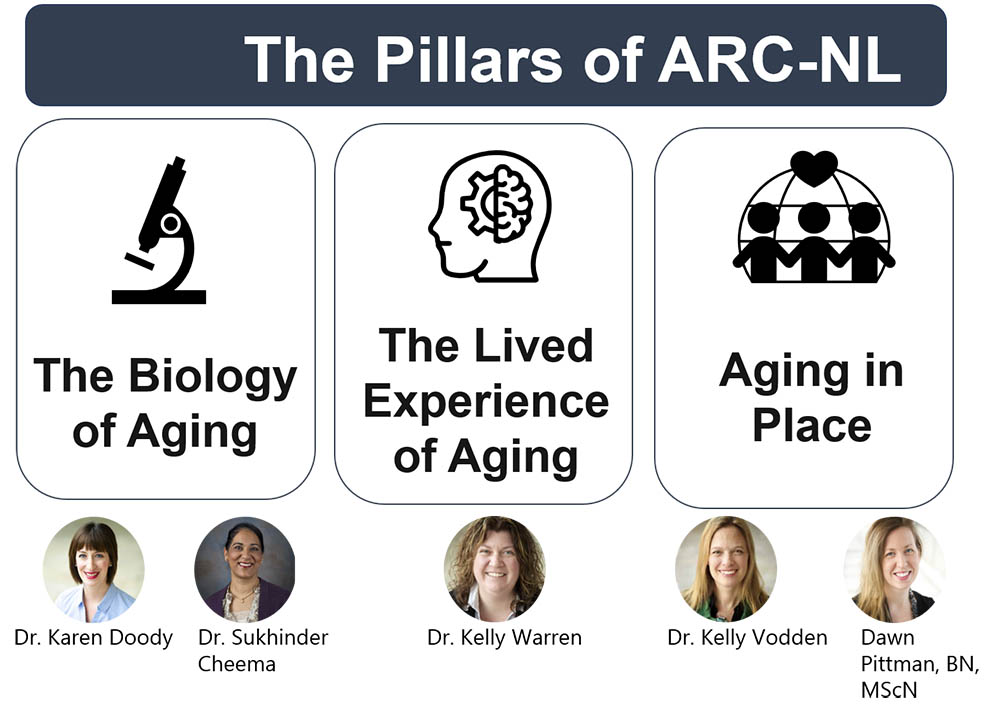
After a successful pilot phase, ARC-NL reflected on future directions for the centre and applied for renewal of research centre status under Memorial's "University Centres: Establishment, Operation and Termination" Policy. The renewal of ARC-NL was approved by the Board of Regents in July 2023 for a five-year period. Dr. Karen Doody of Grenfell's School of Science and the Environment has been appointed academic director for a two-year term.
Thanks to funding from Memorial University and the provincial Department of Children, Seniors and Social Development, ARC-NL is able to provide a number of grants, fellowships and other programming.
In fact, by the end of the 2022-2023 fiscal year, ARC-NL had awarded $262,099.51 in research funding, including:
ARC-NL also announced a funding call for fellowships and a co-funded fellowship with its partner AGE-WELL NCE Inc.
In addition, ARC-NL has introduced a new "pillar" system to create and equitably support research in three broad themes covering the spectrum of aging. The pillars are led by researchers on both campuses who can connect researchers across campuses both within and across the pillars. The three ARC-NL pillars are:
Pillar 1: The Biology of Aging: The mission of the Biology of Aging pillar of ARC-NL is to improve health and quality of life through research on aging processes and age-related diseases by understanding biological, cellular and molecular mechanisms of aging. Pillar leads: Drs. Sukhinder Cheema (Biochemistry) and Karen Doody (School of Science and the Environment).
Pillar 2: The Lived Experience of Aging: The mission of the Lived Experience of Aging pillar of ARC-NL is to understanding and improve the health and quality of life of older adults with cognitive and mental health issues, foster a recognition of the diversity of older adults, promote practices that help establish positive personal and emotional well-being, and develop and improve interventions that lead to healthier aging outcomes. Pillar lead: Dr. Kelly Warren (Psychology).
Pillar 3: Aging in Place: The mission of the Aging in Place Pillar is to support and empower older adults to age well in place at home and in their communities through engaged research. This includes consideration of the impacts of local, provincial and national programs and policies and design of age-friendly programs and policies with a strong focus on community-based and community-engaged research. Pillar leads: Nurse Educator Dawn Pittman (Western Regional School of Nursing) and Dr. Kelly Vodden (Environmental Policy).
Visit ARC-NL's website for more information on programming, resources and partnerships.
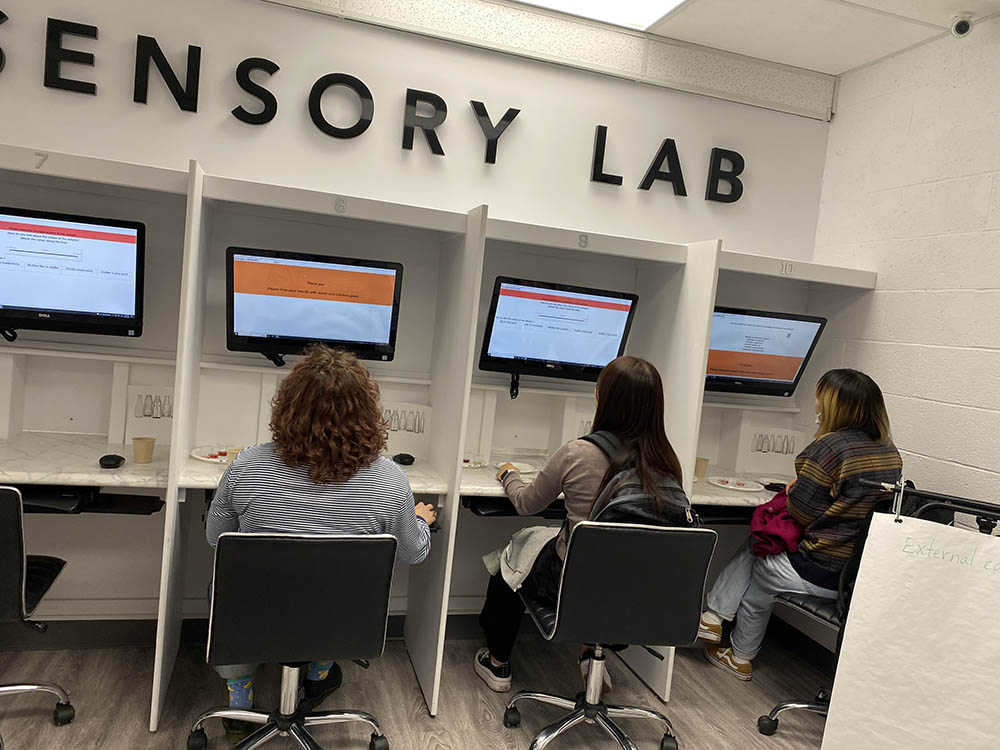
1. Development of food applications utilizing Haskap berry, Lonicera caerulea as a value-added ingredient for functional food products
Haskap is a relatively new crop in Canada. It is tremendously rich in polyphenols and other bioactive compounds with significant anti-inflammatory properties. North 45 Orchards is the largest Haskap grower in North America but their major challenge is the lack of recommendation of a properly researched fertility program in Canada or North America. Therefore, growers have adopted recommendations for other genetically unrelated plants as a benchmark, leading to low and inconsistent Haskap plant productivity and fruit quality.
Haskap berry is a fruit of a unique flavor and has multiple bioactive components such as flavonols, anthocyanins, and phenolic acids. Currently, Haskap cultivation is encouraged among farmers across Canada, and the rate of production is increasing annually. But Haskap is not popular among consumers, and it is yet not a highly consumed type of berry in the market. The lower rate of consumption and the increasing rate of demand for cultivation will create a surplus of the Haskap production. This may create a waste of production if not the yield is carefully managed. Also, considering the post-harvest quality of Haskap berry, the marketable shelf-life of the fruit is up to seven to ten days providing the optimal room temperature and storage conditions. The research is focused on the development of food applications with Haskap berry, utilizing advanced extraction methods and product development techniques for value-added functional beverages and extended shelf-life products. High-purity extraction and product development methods were developed to improve the nutritional quality and the extended shelf-life of final products. Pressurized solvent extractors (accelerated solvent and multiwave extractors) were utilized to obtain high-purity extracts of Haskap berry/Lonicera caerulea enhanced with polyphenols. Two commercial Haskap varieties 'Indigo Gem' and 'Wojtek' were investigated. The extractions were characterized for the availability of phenolics compounds, vitamins, and minerals by HPLC-MS and ICP-MS methods.
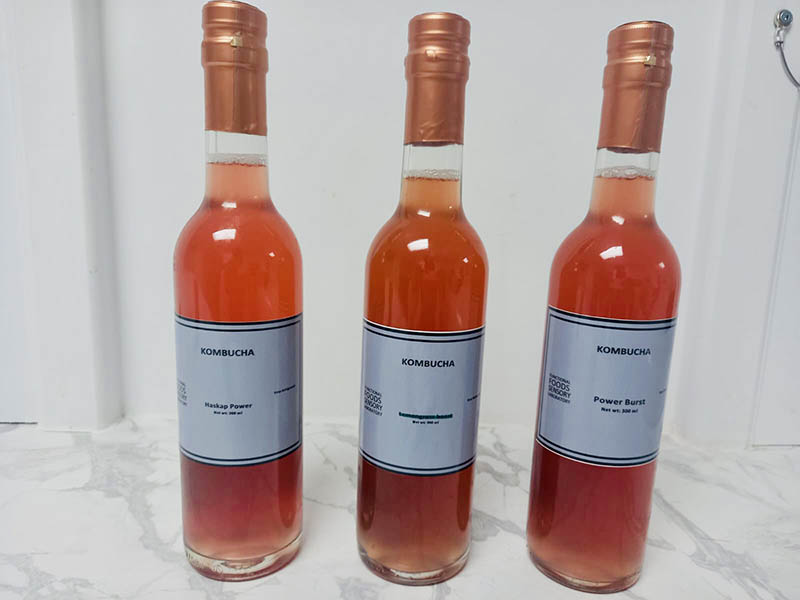
Supuni Gamage, PhD student in the food science program, has utilized the enhanced extract to develop combinations of different Newfoundland wild berry-based functional drink - kombucha.
Beverley Reid, M.Sc. student, was developing flavored iceberg water as a functional food application. These beverages were analyzed for bioactive compounds, nutrition profiles, and sensory data.
New knowledge will be generated on mechanisms of Haskap plants nutrients uptake and utilization for growth and secondary metabolism. These will help increase Haskap berry fruit production and enhance its benefits to human nutrition and health and the environment. The results could be exploited to increase revenue and employment, and to contribute to the expansion of the Canadian Haskap industry.
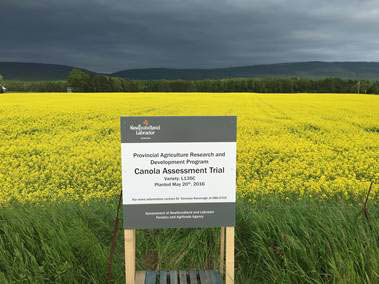
2. Canola produced under boreal conditions is an enhanced source of plant-based omega-3 fatty acids and functional lipids to improve human health
Omega-3 polyunsaturated fatty acids (ω-3-PUFAs), monoacetyldiglycerides (MAcDG), and phytosterols are recognized for their therapeutic value including anti-cancer, anti-inflammatory, antiarrhythmic, antithrombotic, immunomodulatory, and antineoplastic activities. These lipids, mainly obtained through the diet or diet supplements, are emerging classes of functional lipids with promising nutritional, medical, and industrial applications.
Newfoundland and Labrador (NL) has one of the highest prevailing cases of cancers, obesity, diabetes, and cardiovascular diseases such as stroke and coronary heart disease. An estimated 2 in 5 Canadians are diagnosed with cancers in their lifetime and about 1 in 4 will die from cancer. In 2021, an estimated 229,200 Canadians were diagnosed with cancers with ca. 37% mortality rates. Furthermore, cardiovascular diseases are responsible for around 1 in 3 premature deaths in men and one in five premature deaths in women in Canada. Data from a plethora clinical and historical studies have showed that consumption of ω-3-PUFAs, MAcDG, phytosterols, and antioxidants either as part of the regular diet or as supplements significantly reduce the risks factors for developing cancers and cardiovascular diseases among a population. The unique climate of Newfoundland has evolved plants with increased levels of secondary metabolites some of which possess unique therapeutic properties.
We hypothesized that canola oil derived from canola plants cultivated under the boreal climate of Newfoundland will contain superior ω-3-PUFAs, MAcDG, phytosterols, and antioxidants.

The nutritional and functional quality of canola oil produced in Newfoundland was evaluated using validated chromatographic and mass spectrometric techniques. The output of this project demonstrated that NL canola oil was of superior quality compared to other seed oils and canola oil produced in other provinces of Canada. In particular, the increased levels of ω-3-PUFAs, phytosterols, phenolic compounds, tocopherols, vitamins, monoacetyldiglycerides, and antioxidants make NL canola oil ideal for functional foods development. These phytochemicals are able to reduce the risk factors and symptoms associated with some cancers and cardiovascular diseases when consumed as part of the normal diet or as supplements. As such, NL canola oil with enhanced levels of functional lipids and bioactive compounds will be used to formulate secondary and valued-added products with unique functional qualities that could be marketed and branded as local products and targeted to niche functional food markets.
Functional lipids including ω-3-PUFAs are prone to oxidative degradation during processing which limit their cellular bioavailability and therapeutic potentials when consumed either as part of regular diets or supplements. The present NL canola oil will be infused with lemon grass, thyme, basil, and pimento essential oils to create novel functionally enriched valued added products with improved oxidative stability for holistic aromatherapy applications. Furthermore, nanotechnologies based on encapsulation and spray drying will be employed to safeguard the quality of NL canola oil during processing to persevere its superior bioactive profiles.
- Albert Adu Sey, PhD Candidate
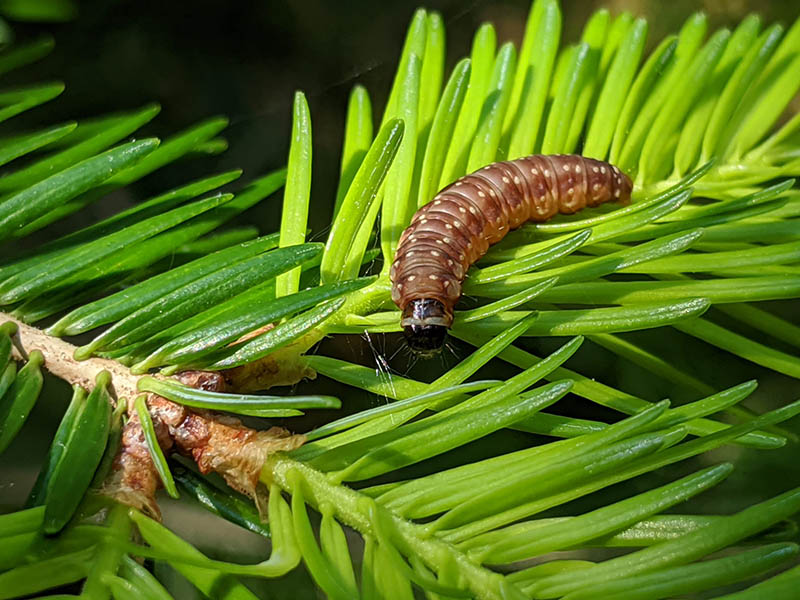
Spruce budworm
Everyone knows that the spruce budworm is not a friend to trees. But how to budworm infestations affect cultural, spiritual and recreational "ecosystem services?"
"These are services that include a culturally meaningful component, such as fishing, hiking and creative inspiration," said Dr. Camille Ouellet-Dallaire. "They are often more challenging to quantify in traditional ecological and economic assessments."
The title of the project of Dr. Ouellet-Dallaire and co-principal investigator Dr. Rachel Jekanowski is "Designing regional and local scale indicators to quantify the impacts of SBW outbreak in Western Newfoundland on cultural ecosystem services."
They are particularly interested in Forest Management District 11 in Western Newfoundland, an area that has recently seen an increase in spruce budworm outbreaks.
In their application, they explained that different management strategies have been used, but often have not considered local and remote communities uses of the landscape outside timber. Their hope is to work with Indigenous and municipal partners to learn how implications of spruce budworm outbreaks might affect Indigenous and rural ways of knowing.
These different management strategies have led to Gros Morne National Park following a no-treatment approach. As a result, forests within the national park have started to be heavily defoliated, leading to drastic changes in the landscape, especially regarding the visual aesthetics of the viewsheds.
"These changes in appearance in forest structures and habitat availability, as well as traditional ecosystem services, could have important repercussions on the benefits of the cultural, spiritual and recreational ecosystem services that local communities gain from their surrounding environments," said Dr. Jekanowski, adding that the project's novel approach will examine effects on cultural and mental health, using both artistic and scientific approaches.
Through their study, which has been funded to the tune of $307,855 by Natural Resources Canada, the researchers will use geospatial modeling and art-based methods to design quantifiable indicators at local and regional scales in spruce budworm outbreak areas.

Dr. Oullet-Dallaire
Dr. Oullet-Dallaire said while they plan to focus the research in two areas - recreational fishing and creative/cultural inspiration-based visual aesthetics - the final list of ecosystem services will be co-identified and co-created with research partners.
In the recreational fishing component, the researchers will adapt a method for quantifying hydrological services, applying it to the ecological needs of the salmon population. This process will identify important habitats for salmonids across the region's watersheds and how they might be disturbed thermally or nutrient-wise by spruce budworm outbreaks.
The cultural/creative component will involve developing arts-based methods for determining cultural impacts of outbreaks on human-landscape relationships in Western Newfoundland.

Dr. Jekanowski
"Our approach will examine how the visual aesthetics of disturbed forests impact cultural ecosystems services for tourists, cultural practitioners, and other users, drawing on research creation and cultural mapping in the environmental humanities," said Dr. Jekanowski.
For example, cultural mapping captures and documents human relationship to place through visual media, such as photography and film making. One example of a cultural mapping deliverable is a story map, which groups maps into a narrative. The researchers will also examine the intersecting effects of climate change and spruce budworm outbreaks, including users' emotional well-being, spiritual fulfillment and aesthetic experiences.
Geospatial analyses will also factor into the methodology, to provide a "hotspot" analysis of viewsheds (geographical areas that are within line-of-sight). This will help to identify the portions of a landscape can be seen at a given location or along a trail and will be combined with art-based methods to highlight the contribution of visual aesthetics to CSR-ES at selected locations. Potential fishing locations may also be identified in these analyses.
"Our approach is innovative because it combines a geospatial ecosystem services modeling with methods from environmental humanities, including cultural mapping through photography and storytelling," said Dr. Jekanowski. "It also provides a place-based approach designed for rural and remote areas that could be applied in other boreal regions or to other landscape changes, such as disturbances from other forest insects, or large-scale natural resource developments." The methods designed in the project will support an interdisciplinary and intersectional view of the SBW outbreaks in Western Newfoundland that could be relevant in a variety of contexts beyond this region.
"Going forward, these analyses could be used to inform key policy recommendations; cultural ecosystem services indicators; and serve as the basis for ongoing community-led outbreak monitoring programs, whether for the spruce budworm or other species," said Dr. Oullet-Dallaire.
For more information, contact the researchers at cdallaire@grenfell.mun.ca and/or rjekanowski@grenfell.mun.ca.